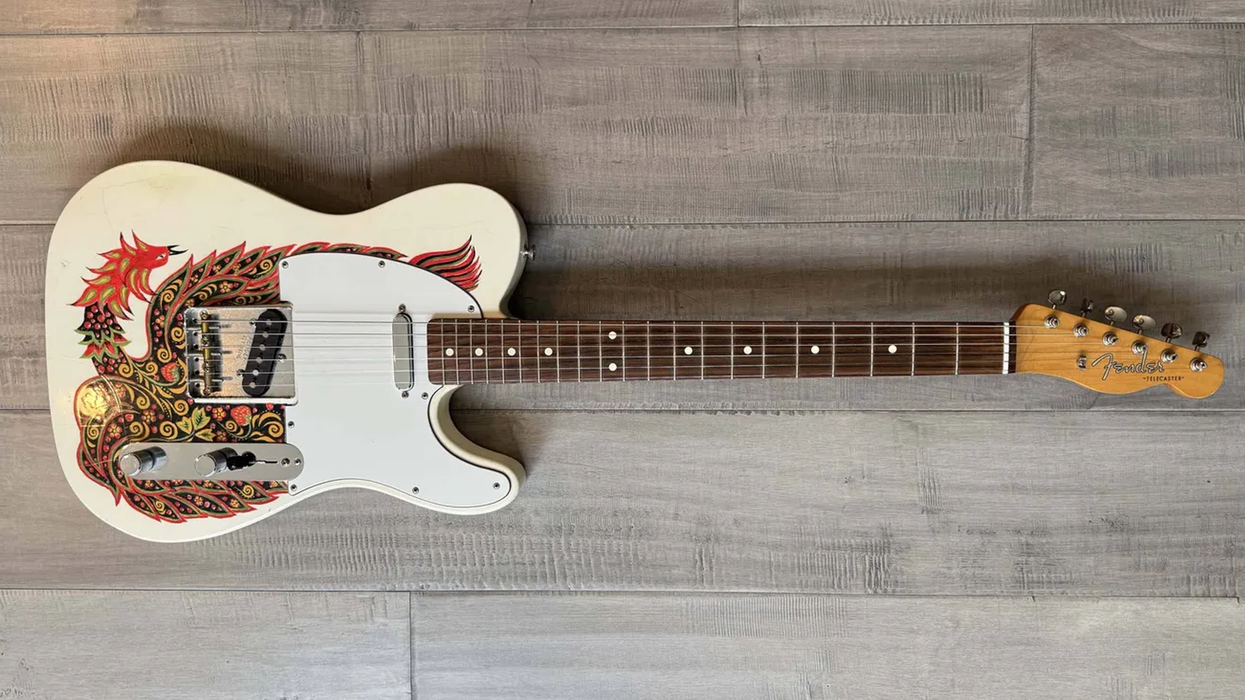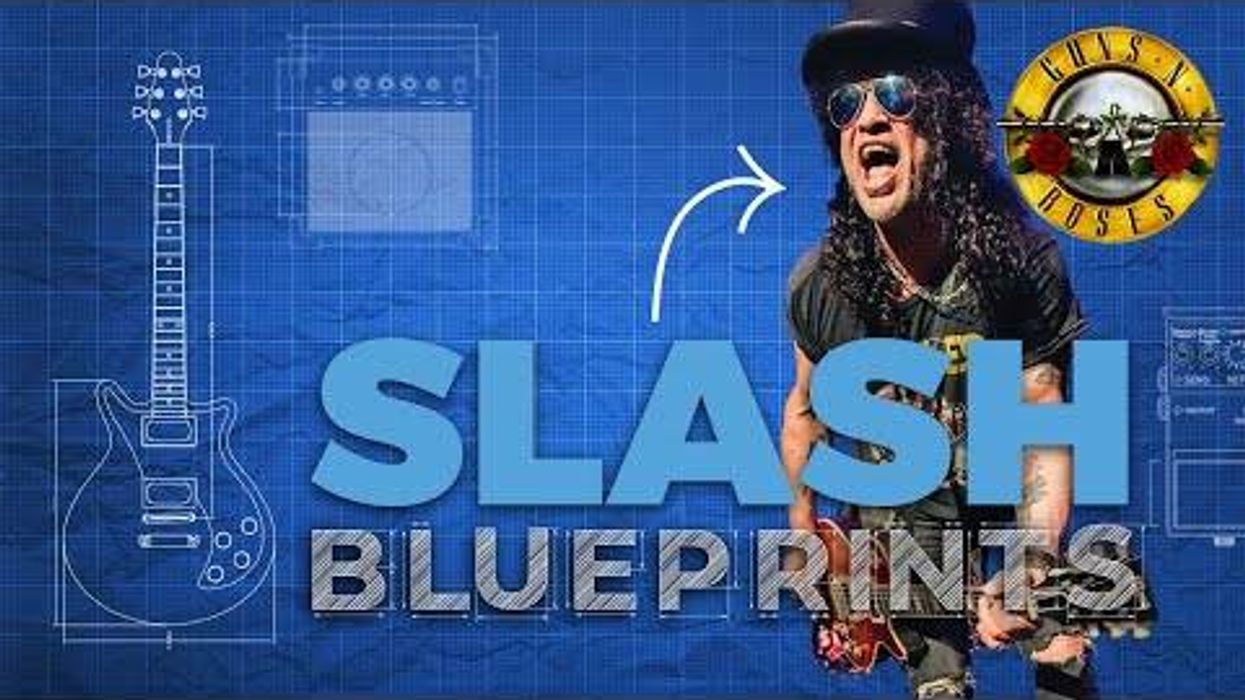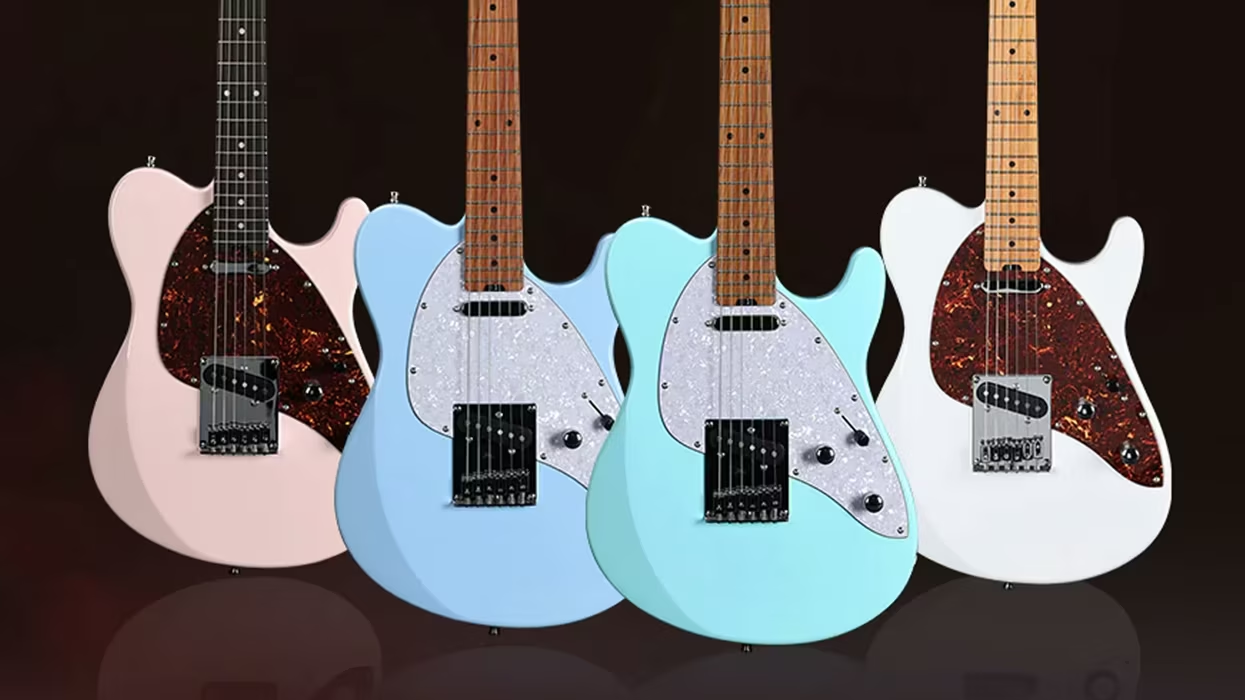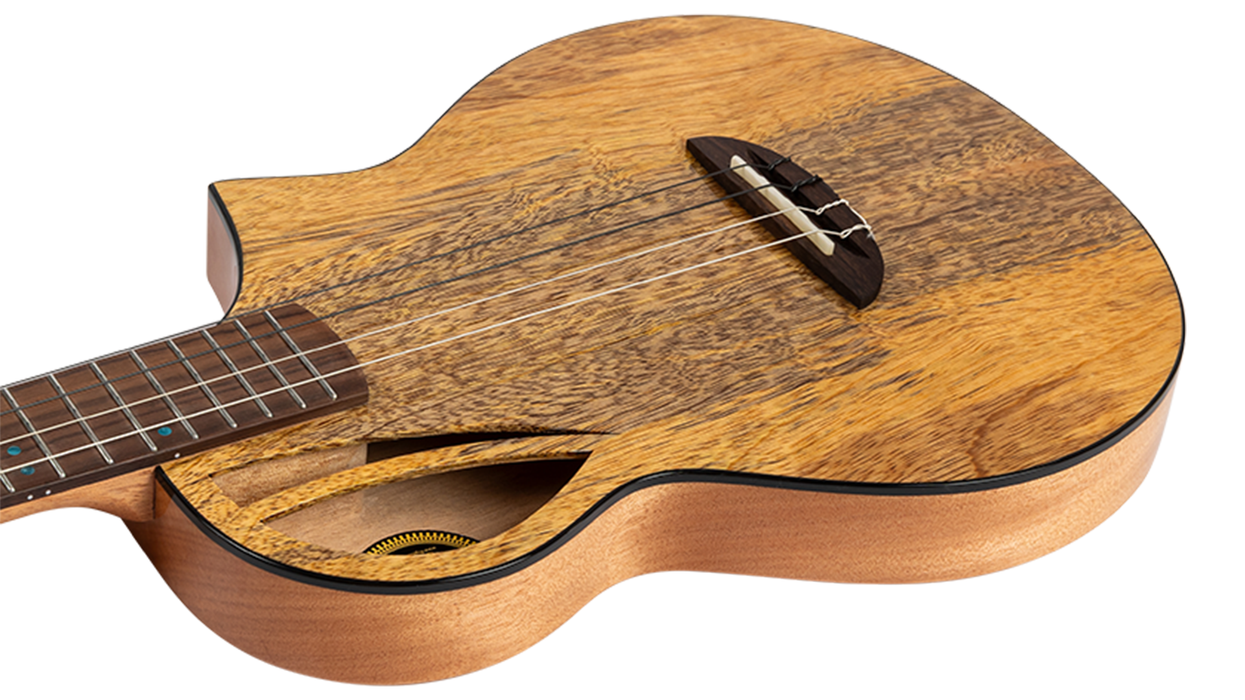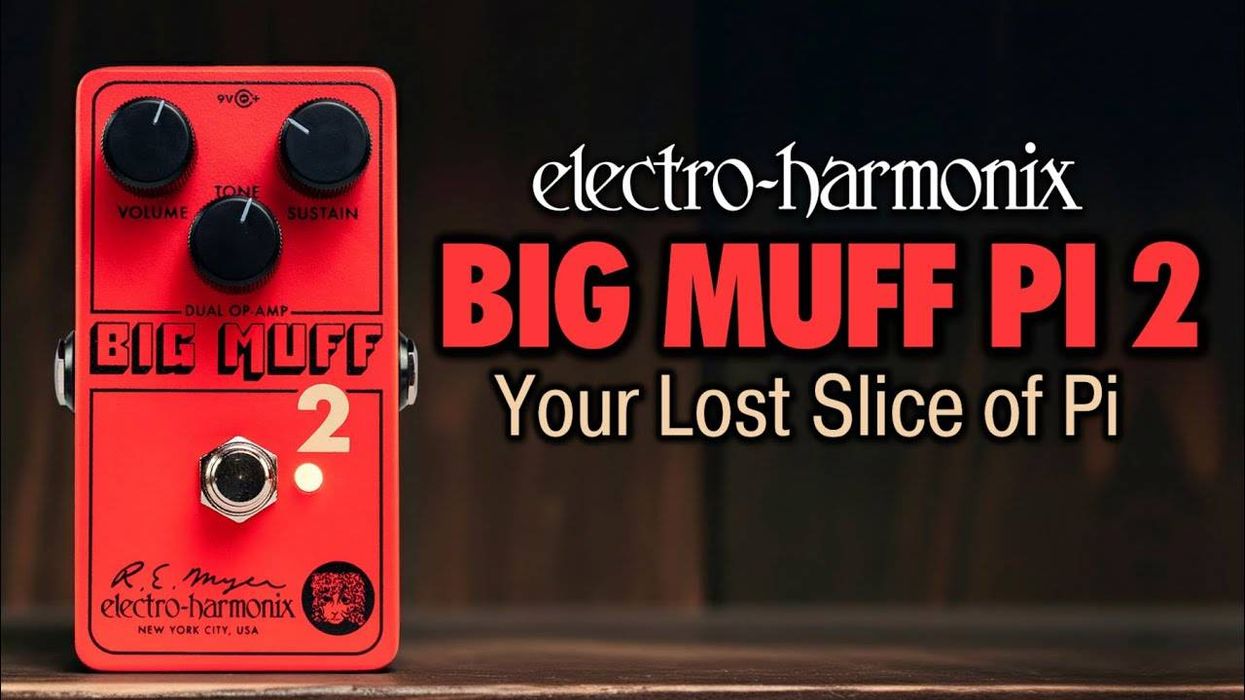Alfonso Hermida’s Zendrive is the landmark boutique pedal that kicked Hermida’s effects-building career into overdrive. Based on Robben Ford’s Dumble tones, the Zendrive captured the blues/fusion icon’s sound so convincingly that Ford himself used it to drive rented tube amps on tour. When the news got out, demand soared, and Hermida partnered with Lovepedal’s Sean Michael to ramp up production.
Drive Down Memory Lane
The latest Hermida/Lovepedal creation is the Dover Drive, inspired by the tube-driven B.K. Butler and Chandler Tube Driver pedals that have powered everything from David Gilmour’s late-model stadium sound to J Mascis’s power jangle to Eric Johnson’s violin-like tone. The Dover Drive’s tube-free design might mean it can’t deliver all the magic of an original Tube Driver, but it’s got a unique vibe, and is a killer all-around pedal that covers everything from mild overdrive to Fuzz Face-like assault.
With its name sandwiched between two horizontal lines in black and white and all caps, the Dover Drive pays visual homage to the Chandler Tube Driver. But its tubeless design, compact enclosure, and simplified tone control depart from the original.
I paired the Dover Drive with a P-90-equipped Gibson Midtown Standard, an Ernie Ball/Music Man Axis Sport with humbuckers and coil-splitting options, and a Mexican-made Fender Stratocaster. My test amps were a Mesa/Boogie Blue Angel and a vintage blackface Fender Deluxe Reverb.
Smooth as Silk
Eric Johnson tends to use modest high and low EQ settings on his Tube Driver, and the Dover Drive highlights that voice. And while the name might imply that the pedal is based on Johnson’s iconic “Cliffs of Dover” tone, Hermida says he sought inspiration from the guitar sound on Johnson’s “Righteous.”
The Dover Drive excels at low-gain dirt. With the gain control at minimum, it adds grit and weight to single-note runs and generates the perfect breakup for harmonically rich double- and triple-stops. It’s super dynamic and responsive at these cleaner settings, adding sparkle to folk chords or generating grinding AC/DC rhythm sounds, depending on how hard you attack the strings.
Ratings
Pros:
Authentic Tube Driver-like sounds. Superb dynamics and sensitivity.
Cons:
The powerful bias control is only adjustable via internal trimpot.
Tones:
Ease of Use:
Build/Design:
Value:
Street:
$199
Hermida Audio Technology Dover Drive
lovepedal.com
The pedal’s character changes noticeably when you bump the gain up to 11 o’clock. Single notes take on a vocal quality ideal for lead lines and low-register, boogie-type riffs. Chords take on a cranked-amp character that can be further sculpted with pick attack. And though the Dover Drive has a mid-heavy voice, triad-based riffs on the A, D, and G strings remain clear.
The Sweet Spot
The sweet spot for smooth sustain lives at about 1 o’clock on the gain knob, where the pedal becomes perfect for Johnson-esque pentatonic flurries and Allan Holdsworth-type legato runs. Maxing the gain adds fuzzed-out aggression for raunchy, somewhat compressed chords. But even at these high-gain settings you can easily tame the Dover Drive—its ability to remain touch-sensitive and dynamic through its gain range is remarkable. Lighter pick attack produces beautiful clean tones (although with the gain cranked, you can feel the pedal straining to remain polite). Digging in makes notes scream. It’s a joy to have such a broad range of sounds available via simple guitar volume and tone adjustments.
While the Dover Drive’s dark, creamy voice can make for an effortless-feeling playing experience, sometimes you want more attack and cut. Fortunately, unscrewing the back plate reveals a bias-adjusting trimpot that can alter the pedal’s silky/buttery character to an edgier, more David Gilmour-like sound. Given the trimpot’s sound sculpting skills, it’s a shame it’s not an external control.
The Verdict
The Dover Drive delivers much the mojo of Eric Johnson’s violin-like Tube Driver tone—and the current price of vintage Tube Drivers makes the Dover’s $199 price palatable. But focusing exclusively on Eric Johnson-like attributes overlooks that fact that the Dover Drive is a touch-responsive, dynamic, and wide-ranging overdrive suitable for any player who loves transitioning from “smooth” to “growl.”


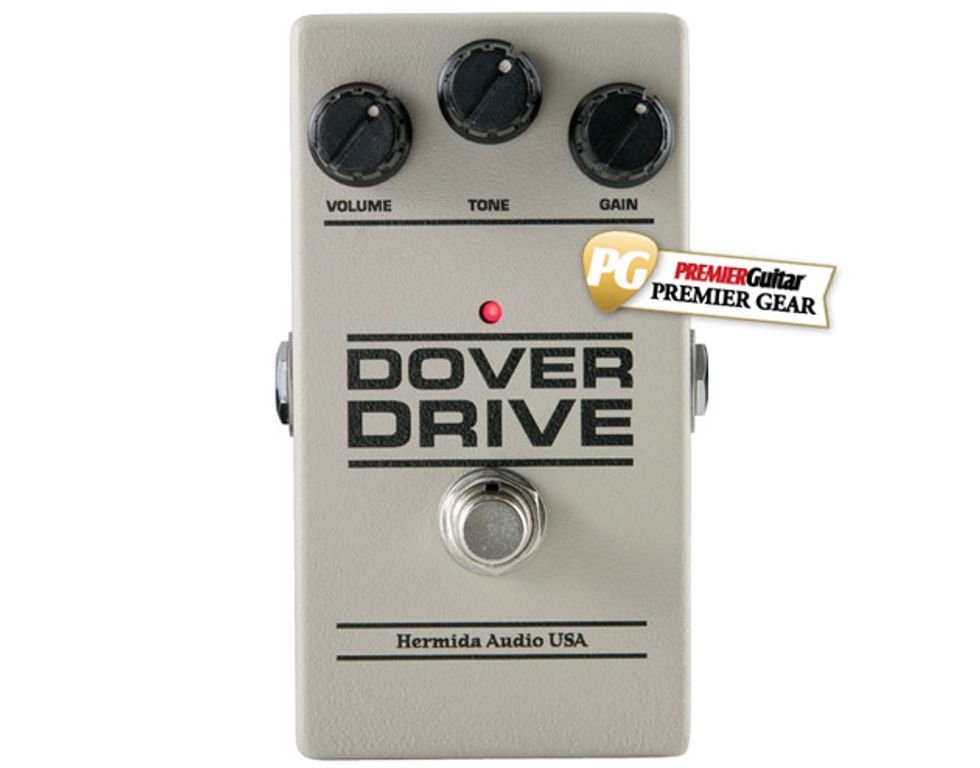

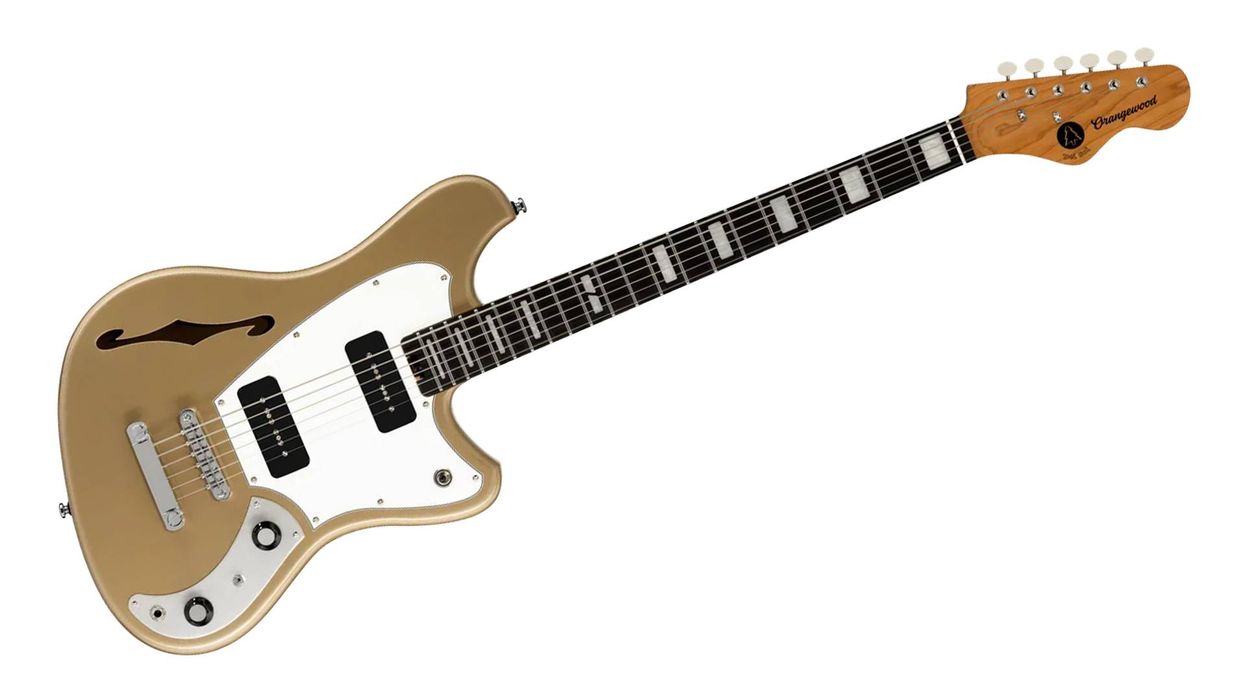



![Rig Rundown: Russian Circles’ Mike Sullivan [2025]](https://www.premierguitar.com/media-library/youtube.jpg?id=62303631&width=1245&height=700&quality=70&coordinates=0%2C0%2C0%2C0)







